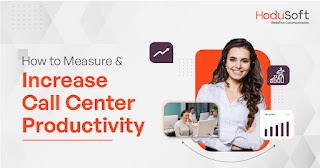How to Set Up a Small Business Customer Service Call Center
Be it a small business, a mid-sized organization, or an enterprise-level corporation, every one of them needs a well-functioning call center to serve customers effectively or generate high-quality leads. The problem, however, is the first one can’t afford to invest as much time, money, and resources to set up a dedicated call center as the last two.
But that should never stop small businesses to match the customer service, satisfaction, and experience provided by their bigger counterparts. The advancements in digital technology have leveled the playing field and setting up a call center is extremely easy, simple, and more cost-effective than ever before.
You just need a good computer system, a stable internet connection, some skilled agents, and a trustworthy call center solution provider to start and scale up a call center for your business. This article discusses five key steps to setting up a small business customer service call center for small businesses.
- Select the right type of call center suited for your business’s needs
First thing first; when it comes to setting up a call center for your business, you must decide the type of call center that’s best suited for your needs. You have six options to choose from—inbound, outbound, blended, multichannel, omnichannel, and virtual call centers. If you need your call center to receive incoming customer calls, then inbound call center software is the right solution for you. If you want your agents to make outgoing calls to your customers and prospects, you need outbound call center software. In case you would like to deal with both incoming and outgoing calls, then look for high-quality blended call center software. Or, you can choose multichannel or omnichannel call center software to handle communication from a variety of channels. A virtual call center will free you from relying on a physical facility and allow your agents to work remotely.
- Find the best call center software provider you can get within your budget
After zeroing in on the right type of call center for your business, the next step is to choose the best software in a market that’s replete with plenty of options. That’s when the internet can help you immensely. A quick Google search such as “Best Call Center Software 2022” or “Top Call Center Software for Small Businesses” will generate a lot of results. Some of the top results on the first search engine result page would be paid ads. So, it’s better to select a list created by reputable portals such as softwareadvice.com or yourstory.com in which you can find the most frontrunner call center software along with their reviews, features, prices, pros, cons, and how they perform in comparison to each other. In the list, you’ll find the names of many behemoths as well as some relatively new players who provide the same services and features (if not better) for considerably lower prices.
- Plan how to manage the calls
After choosing the right call center software provider, you must plan the best ways to manage the calls and set up systems ahead of time to address the types of calls and inquiries you receive. If you choose to have an outbound call center, then you need to set up your dialers and auto dialers or predictive dialers to make and optimize outbound calls. It will save your agents’ time as well as enhance their productivity. If you decide to have an incoming or a blended call center, then set up an Interactive Voice Response system to provide self-service options to your customers. You can also focus on an Automated Call Distribution system for efficient routing of incoming calls to the available agents. A high-quality SaaS-based, or a web-based, call center solution comes with all these features and systems for efficient call management.
- Handpick the right agents and onboard them seamlessly
Hire people with the right skills, aptitude, and attitude to serve your customers in the best possible manner. After the recruitment process, define skill groups based on the specialized knowledge of your representatives as well as the size of your business. In the next step, you must focus on creating agent IDs, which can be the agent’s name, employee ID, email ID, or nickname. For effortless CRM integration, you can save the agent IDs the same as the CRM IDs.
- Create mechanisms to monitor calls and collect feedback
Create mechanisms to monitor calls such that managers and supervisors can access every call recording and no call goes un-tracked. Make sure that the call center has analytics and reporting tools to provide call data and insights as well as the performance of each agent. Also, have a customer feedback mechanism in place to know how satisfied customers are with the service as well as calculate the customer satisfaction score.
Summing up,
A call center is a necessity for all sizes of business and if you’re an entrepreneur you simply cannot afford not to invest in a reliable and affordable call center solution. Setting up a call center software is extremely easy and affordable in the digital age and it not only helps you provide excellent customer service but enhance customer experience and satisfaction with your brand.




Comments
Post a Comment